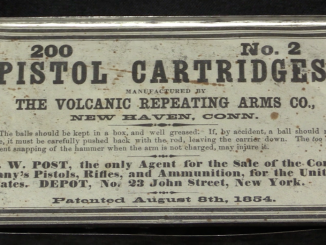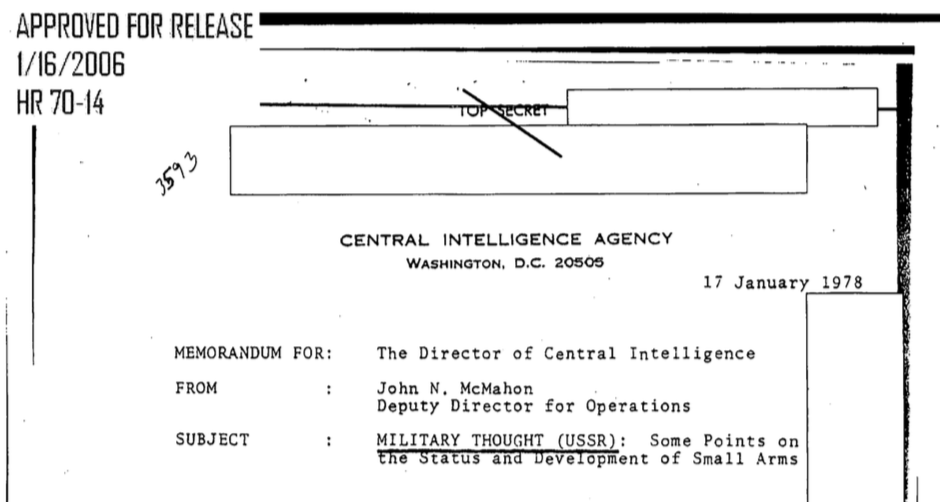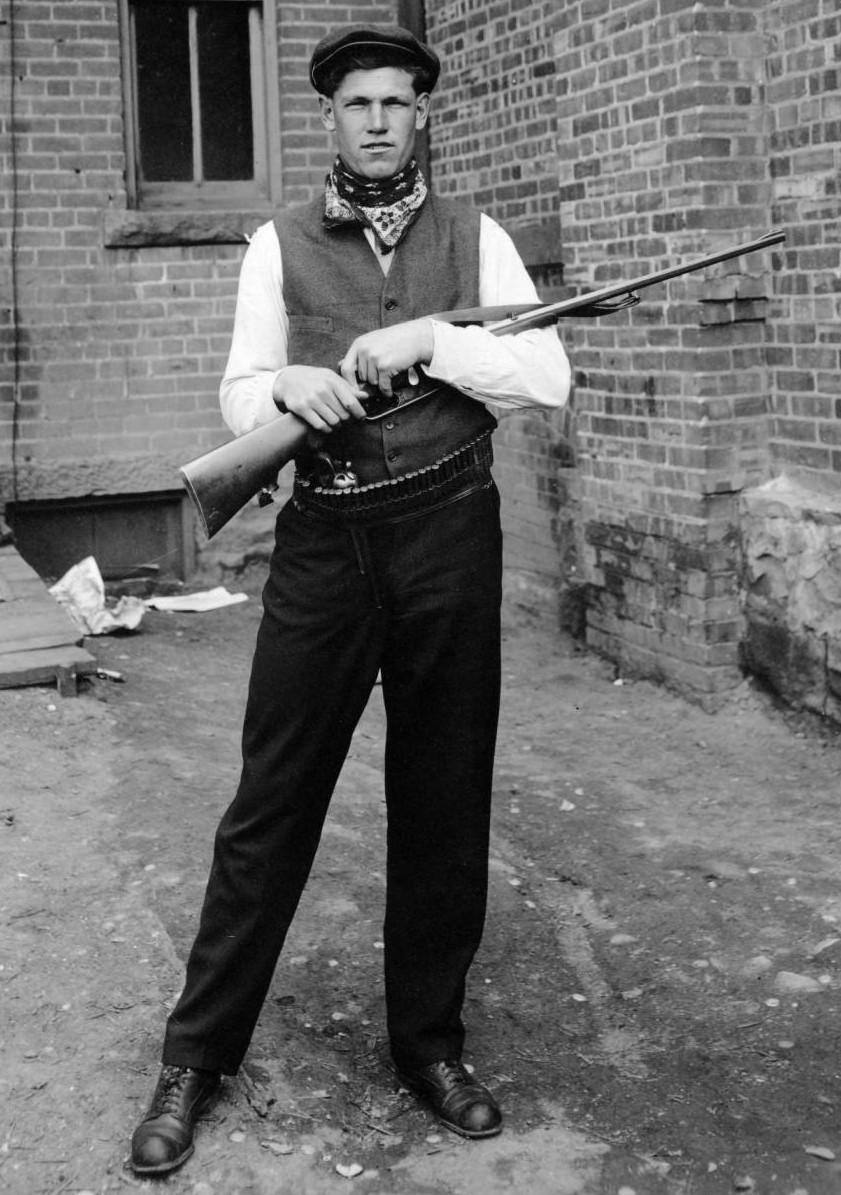J.P. Lindsay was a former Springfield Armory employee when he designed and patented an idea for a two-shot, single-barrel pistol. The apocryphal story is that Lindsay’s brother was killed in a firefight against two Indians, while reloading his single-shot rifle – so Lindsay was moved to design a weapon which would have saved his brother.
The idea is a simple one, and Lindsay is not the first to have made such a gun. The single barrel has two flash holes, situated such that two stacked charges of powder and ball may be loaded and then fired one after the other. The pistol has two hammers and uses two percussion caps. Unlike the Walch revolver, Lindsay used a single trigger, which would fire first the right hammer if both were cocked, and the left hammer is only it was cocked.
The “Young American” (Lindsay’s trade name for the pistol) was made in pocket, belt, and martial sizes, with this one being a martial type in .45 caliber and with an 8 inch barrel. Only about 100 of these were made, as the concept has substantial practical problems – namely the many ways that one could wind up firing the rear charge first.




Or just build a double barrel pistol. Damn theres three Injuns
Lindsay rifle-muskets in .58 caliber, with the same lockwork, were used by state militia and volunteer units during the American Civil War.
Most surviving ones show considerably more wear on the left hammer and nipple than the right one, indicating that the soldiers using them were simply loading with a single charge and bullet, ignoring the “two-shot” feature entirely.
cheers
eon
Various superposed load type weapons were created several times in history, but most often ended as failure
https://en.wikipedia.org/wiki/Superposed_load
with modern iteration being so-called Metal Storm, whole family of weapons.
Main problem in such weapon how to prevent firing of WRONG load.
Lindsay’s “Young American” pistol looks for me somewhat like invention which is late. It give ability to fire 2 shot without reloading and is lighter than similar double-barrel pistol, but in comparison to revolvers, which can fire 6 shots, looks poor.
At least I won’t play “Those endearing young charms” on a piano with a Lindsay pistol rigged to shoot the player… you will probably know where I got this joke.
BTW: Harrington & Richardson produced https://en.wikipedia.org/wiki/H%26R_Firearms#Products some revolver models with Young America in name, they were small .22 or .32 caliber weapons.
That Metal Storm thing seem to hit dead end. As much as it looks optimistic at first, it gets potentially so tricky it may back-fire, literally.
https://www.theregister.co.uk/2007/11/19/metal_storm_robot_machinegun_grenade_gasm/
In meantime the inventor earned nice pack of money.
Afaik U.S. Marines, at the end acquired rights for Denel revolver launcher instead (Ian was in production plant and showed video). Probably better solution overall.
Also note that Metal Storm system seems to work quite good with (40 mm) grenade launcher and (12 gauge) shotguns – both weapons employing rather modest pressure of gases for modern standard and which rarely need ultra Rate-of-Fire.
The original idea for MetalStorm was an inexpensive version of a naval or merchant marine CIWS, intended to shred incoming “sea-skimmer” anti-ship missiles like Silkworm while being a lot cheaper than the U.S./ NATO Raytheon Phalanx 20mm Vulcan type.
Basically, it would fire metal slugs at moderately high velocities (about 500 m/s) to create a “shot pattern” that the missile would hit and end up looking like a mallard that got in front of a hunter’s 12-gauge. For that kind of application, fast response and high volume of fire (to saturate a “box of air” with chunks of metal) are more important than either range or accuracy. If you think of it as a sort of RBOC launcher with a nasty sting, that’s pretty much what it was.
Other applications, ranging from infantry mortar type weapons (sort of makes sense) to handguns (???) were promoted later. None could get around the basic problems that (1) first rounds out tended to be very low velocity due to lack of barrel-acceleration time, (2) accuracy was poor and wildly unpredictable, and (3) the barrels were not generally reusable. All attributes that really didn’t matter in the original “cheap n’cheerful Cee-Whiz” idea.
MetalStorm was an interesting “low-buck” solution to a serious problem that still plagues mariners in certain areas. (Pirates in the Malacca Strait, for example, love to use Silkworms as a threat to get merchies to “pull over” and be boarded.)
Outside of that area, its shortcomings were readily apparent.
cheers
eon
“shred incoming “sea-skimmer” anti-ship missiles like Silkworm”
For that purpose such weapon makes sense, am I wondering how it would compare against cluster of (bigger-caliber, lower-quantity) barrels firing canister or shrapnel shells.
The problem with the Metal Storm CIWS was in fact insufficient range. Destroying the seeker head very close to the target does not help much, because rest of the missile might hit the ship anyway, and depending on the degree of damage even the fuze might work. Short range gun CIWS systems use high velocity APDS projectiles to maximize the range and damage on the missile. The problem gets much more serious with supersonic missiles, and most sources maintain that smaller than 35 mm systems have limited effectiveness against supersonic missiles. In fact all gun-based systems are somewhat outdated in that regard, which is why recent developments have concentrated mostly on missile CIWS such as the RIM-116 RAM and laser based systems.
Well, you wouldn’t load two shots in the middle of a battle anyway, so most of the time the rifles would be used as standard single shot muzzleloaders, which explains the wear on the left hammer and nipple. That does not really prove that the two shot feature was never used.
Are you suggesting that the first volley would be the double shot burst volley and then regular single shot reloads? That makes sense!
Would be interesting to see how this “double action flipflop” trigger mechanism is done.
This concept seems anachronistic when revolvers had already dominated the handgun market.